What Is Stomach Cancer?
The stomach is a muscular, hollow organ located in the upper central part of the abdomen, just below the ribs. Its primary role is to store food, break it down, and begin the digestive process by turning it into a simpler form for nutrient absorption in the intestines.
Stomach cancer, also known as gastric cancer, develops when abnormal cells in the lining of the stomach grow uncontrollably and form a tumor. Over time, this cancer can invade deeper layers of the stomach wall and may spread to nearby organs or lymph nodes.
The complexity and stage at which the cancer is diagnosed largely determine the choice of treatment options and the prognosis. Early detection often leads to more effective management and better outcomes.
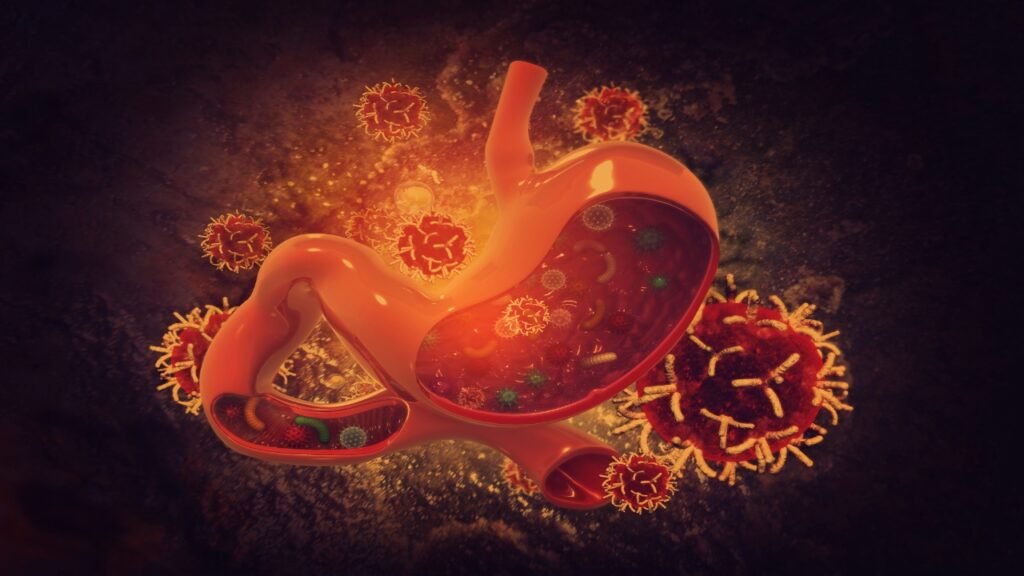
Causes and Risk Factors of Stomach Cancer
Understanding the underlying causes of stomach cancer is crucial for crafting an effective treatment plan, especially when integrating approaches like Ayurvedic treatment for stomach cancer.
At its core, stomach cancer develops when mutations occur in the DNA of the stomach lining cells. These genetic changes cause the cells to grow and divide uncontrollably, leading to the formation of tumors. Over time, these tumors can invade deeper layers of the stomach wall and spread to other parts of the body.
Key Risk Factors for Stomach Cancer
Age: Most cases are diagnosed in individuals over the age of 65.
Genetic Mutations: Inherited conditions or spontaneous mutations can significantly increase susceptibility.

Different Types of Stomach Cancer?
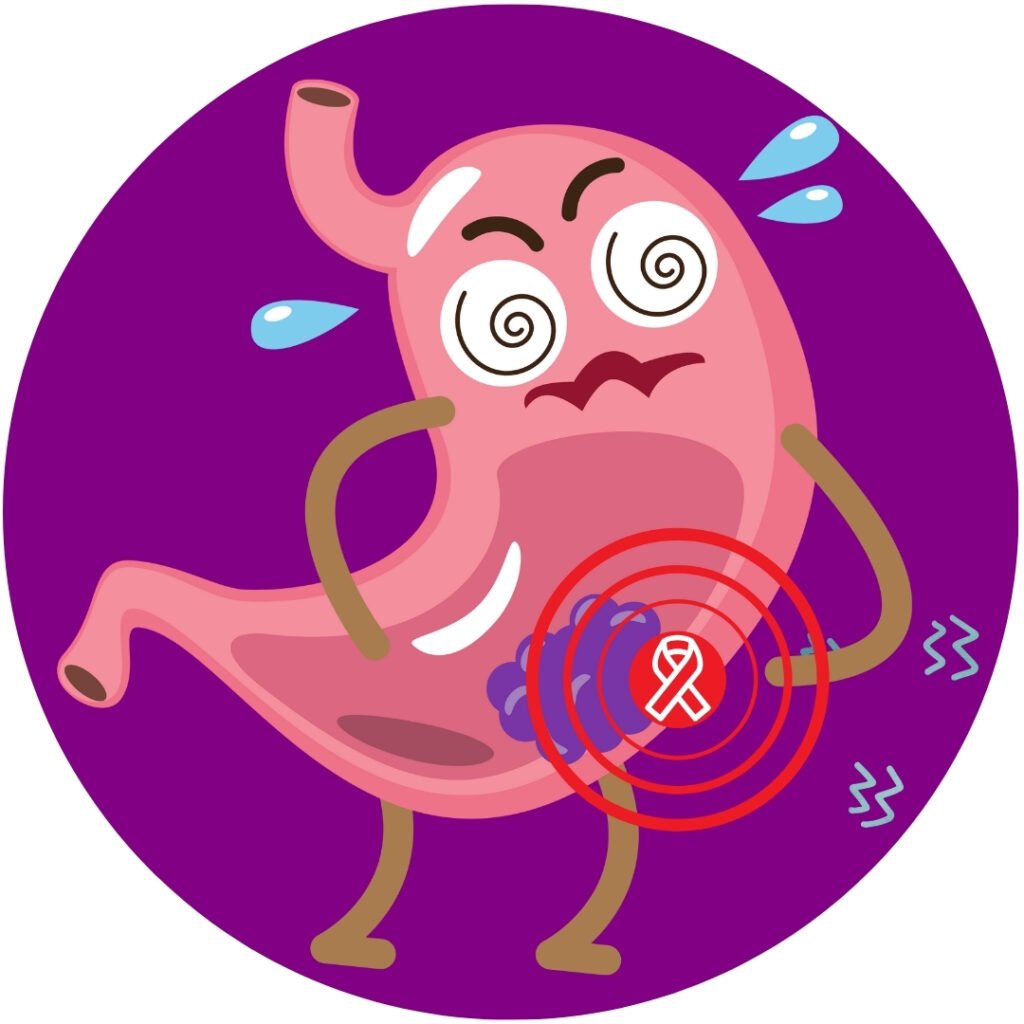
Adenocarcinomas of the Stomach
Adenocarcinomas are the most common type of stomach cancer, originating in the innermost lining of the stomach.
Intestinal Adenocarcinoma:
Grows slowly and is generally more responsive to treatment. It is more often diagnosed in older adults.Diffuse Adenocarcinoma:
A rarer and more aggressive form that spreads quickly. It tends to occur in younger individuals.Linitis Plastica:
A rare subtype of diffuse adenocarcinoma where cancer cells spread widely across the stomach wall, causing it to become thick and stiff.
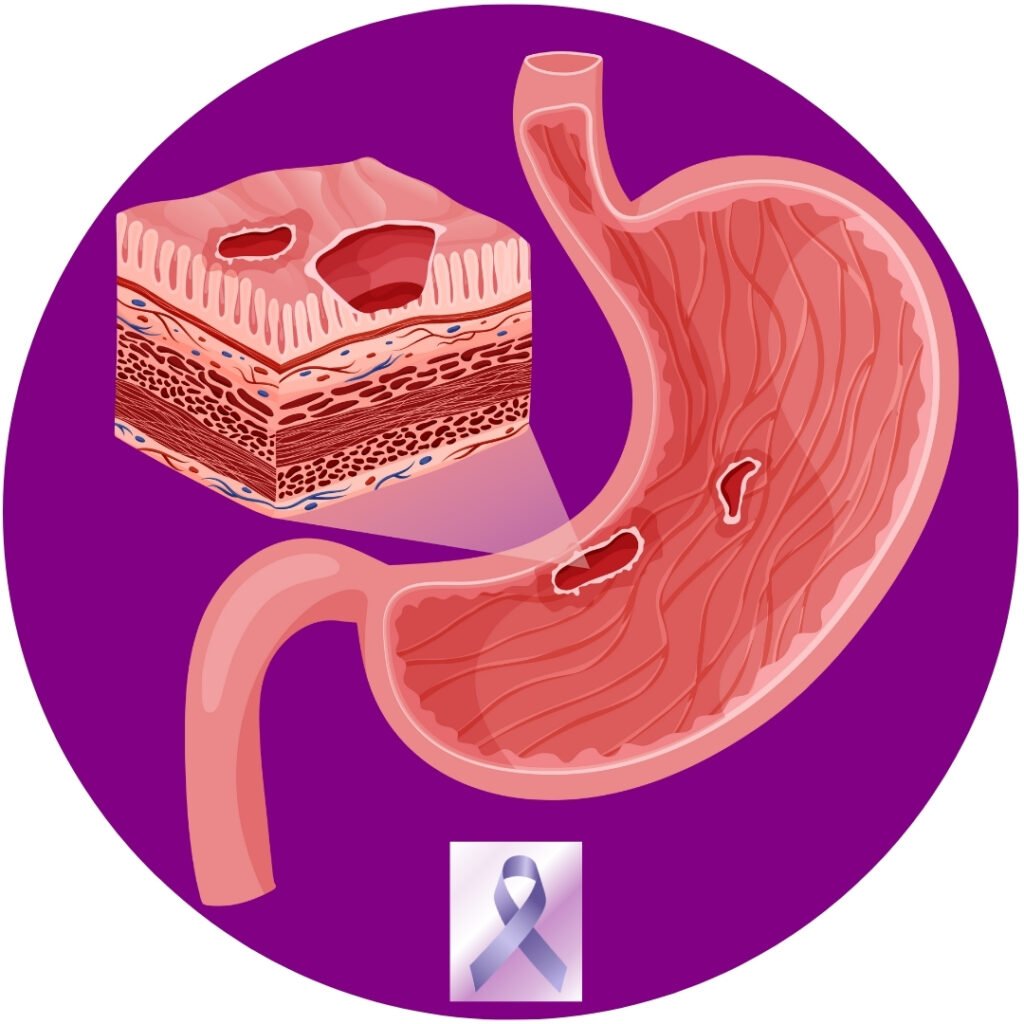
Carcinoid Tumors
These tumors develop in the hormone-producing cells of the stomach.
Type 1 and Type 2 Carcinoid Tumors:
Generally slow-growing and often detected during routine endoscopy. They rarely spread beyond the stomach.Type 3 Carcinoid Tumors:
More aggressive with a higher likelihood of metastasis. They may also cause carcinoid syndrome due to excessive hormone secretion.
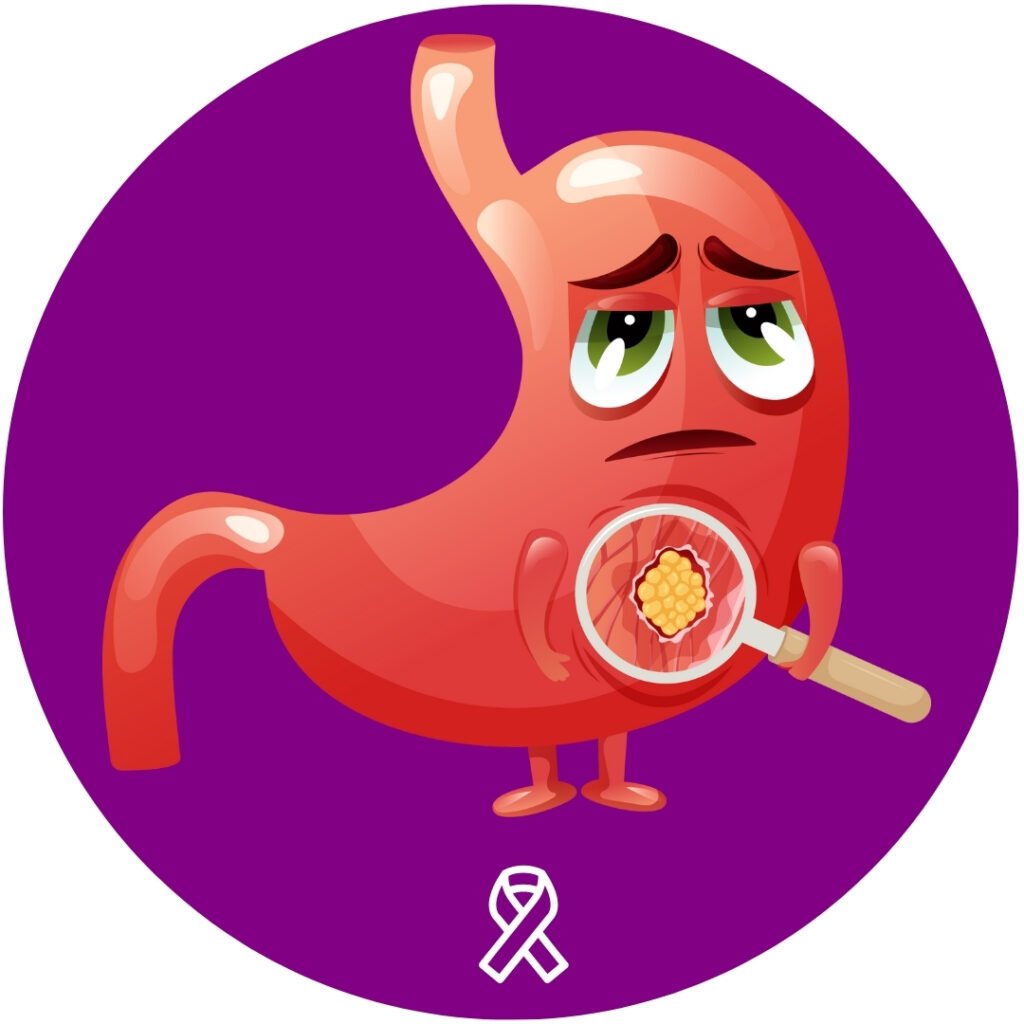
Gastrointestinal Stromal Tumors (GISTs)
GISTs originate from specialized cells known as the Interstitial Cells of Cajal, found in the walls of the digestive tract. Under the microscope, these cells resemble nerve or muscle cells. GISTs in the stomach can be benign or malignant.
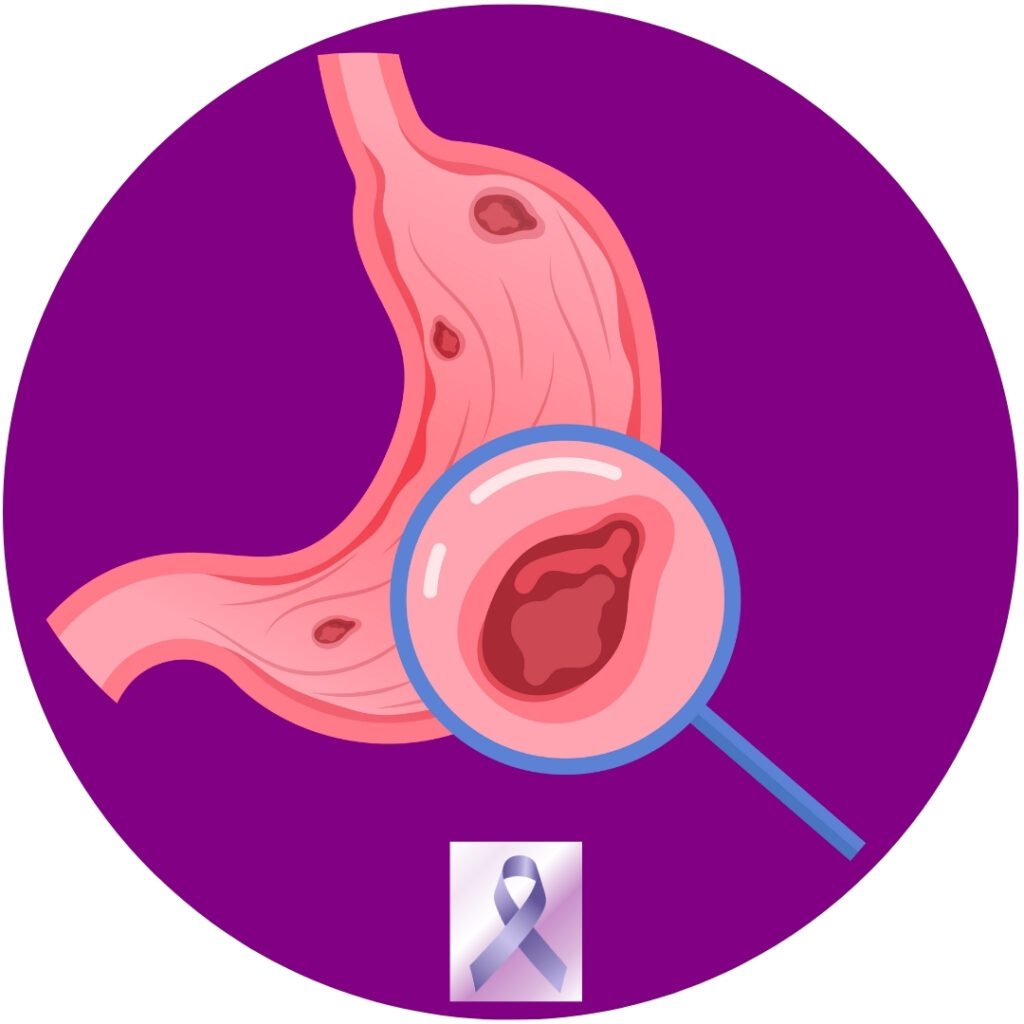
Lymphomas
Although rare, lymphomas can develop in the stomach’s lymphatic tissue. These cancers typically progress slowly but have the potential to become more aggressive and metastasize if left untreated.
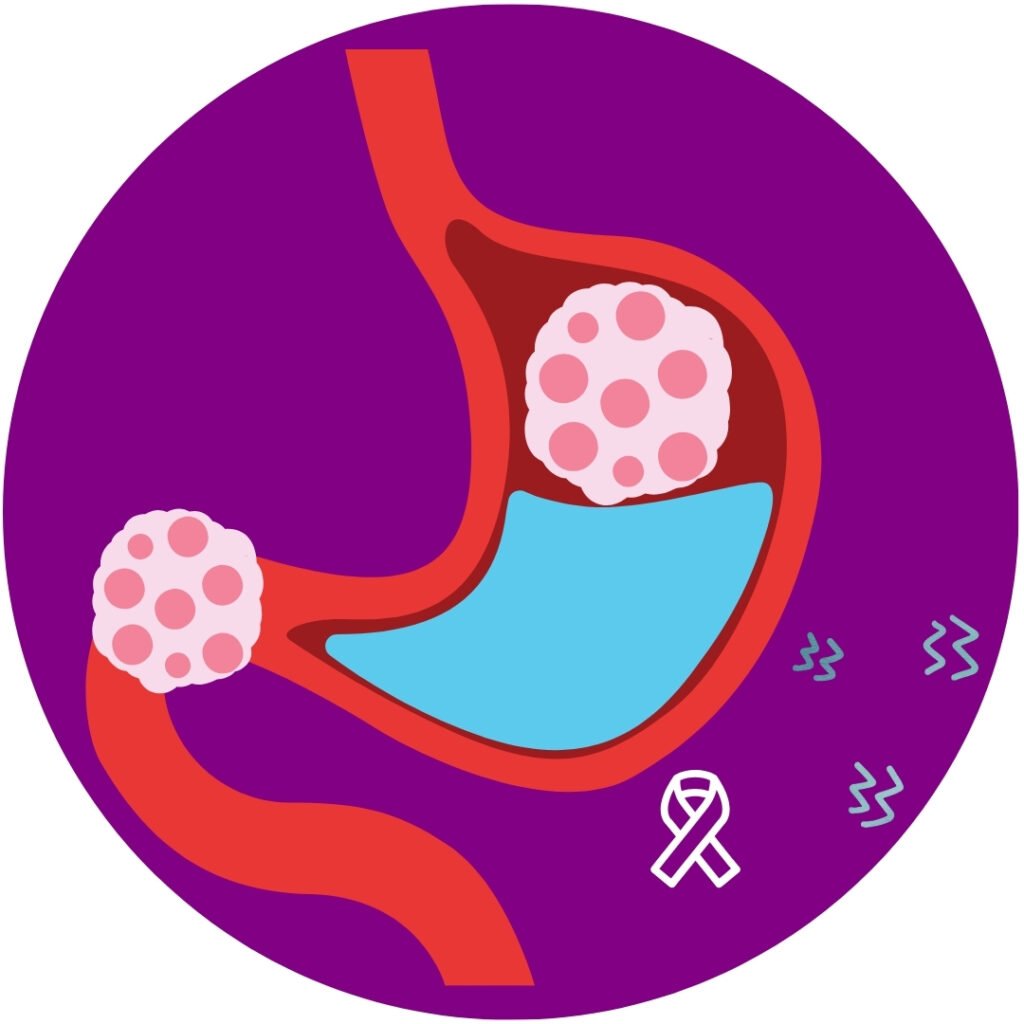
Hereditary Diffuse Gastric Cancer (HDGC)
This form of cancer is caused by inherited genetic mutations. Individuals with HDGC are at high risk for developing multiple tumors throughout the stomach lining, often leading to diffuse-type gastric cancer at a young age.
Common Signs and Symptoms of Stomach Cancer
In the early stages, stomach cancer might not show noticeable signs. However, as it progresses, several symptoms may start to appear:
Early Fullness:
Feeling full quickly, even after eating small amounts, is one of the initial signs often overlooked.
Swallowing Difficulty (Dysphagia):
Some individuals may experience trouble swallowing food comfortably.
Persistent Indigestion or Heartburn:
Long-lasting acid reflux, burning in the chest, or indigestion can be warning signs, especially if they do not improve with usual remedies.
Abdominal Discomfort or Pain:
Ongoing stomach pain or a dull ache in the upper abdomen may be present.
Bloating After Meals:
A sensation of tightness or pressure in the abdomen, particularly after eating.
Nausea and Vomiting:
Nausea may occur frequently, and vomiting—especially if it contains blood—should not be ignored.
Unexplained Weight Loss:
A sudden drop in weight without any change in diet or activity level is a major red flag.
A New Approach to Cancer Healing
at Raghavan Cancer Care
At Raghavan Cancer Care, treatment goes beyond just managing cancer — it’s a complete journey toward physical, emotional, and spiritual wellness.

Metabolic Healing
Dr. Raghavan follows a powerful method inspired by Dr. Thomas Seyfried, focusing on the unique way cancer cells use energy. By supporting the body through special approaches like a ketogenic diet, this method offers a fresh direction in cancer care rooted in metabolic understanding.
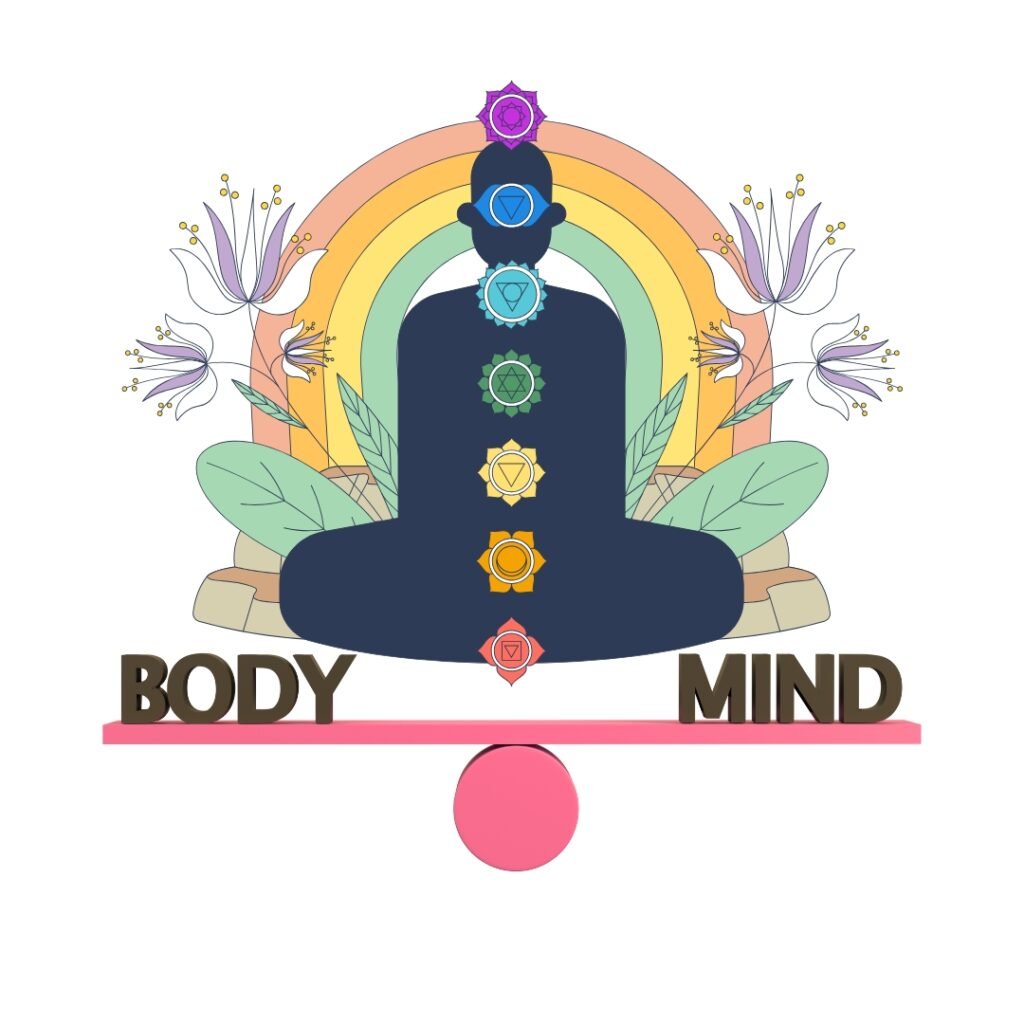
Mind-Body Balance
Taking inspiration from Dr. Joseph Mercola, our care also emphasizes the deep link between the mind, body, and spirit. At Raghavan Cancer Care, we believe that emotional and spiritual support is just as important as physical treatment in the healing process.

Food as Medicine
Dr. Wallach’s nutritional guidance has shaped our strong focus on diet. We promote clean, nutrient-rich meals and personalized nutrition plans to help strengthen the body and support recovery naturally.
